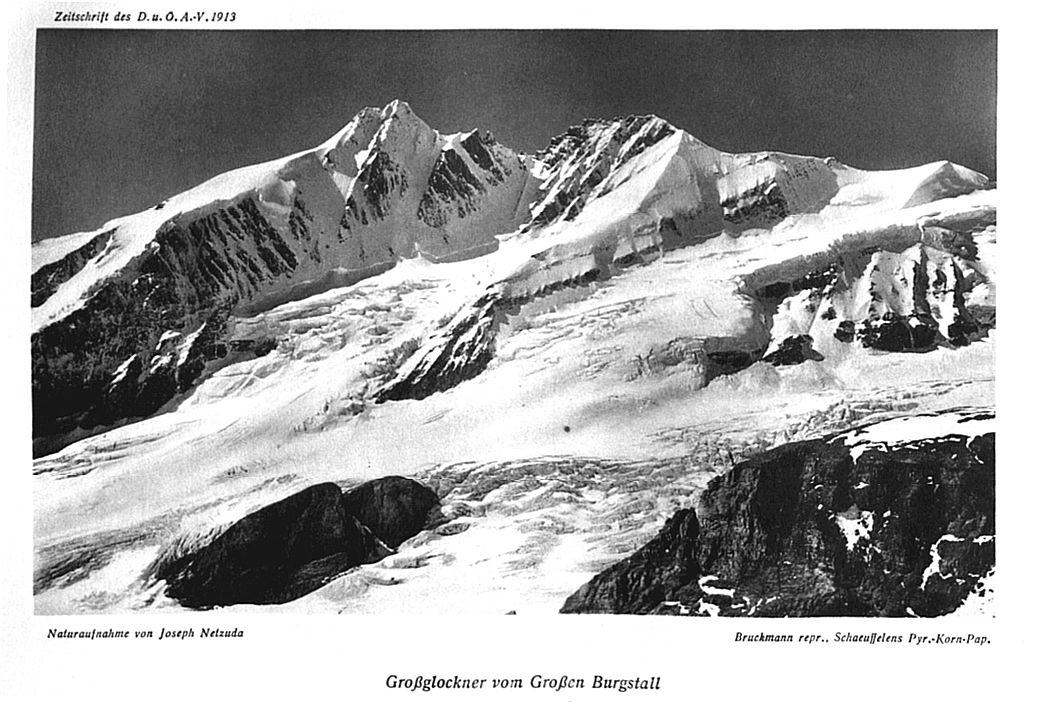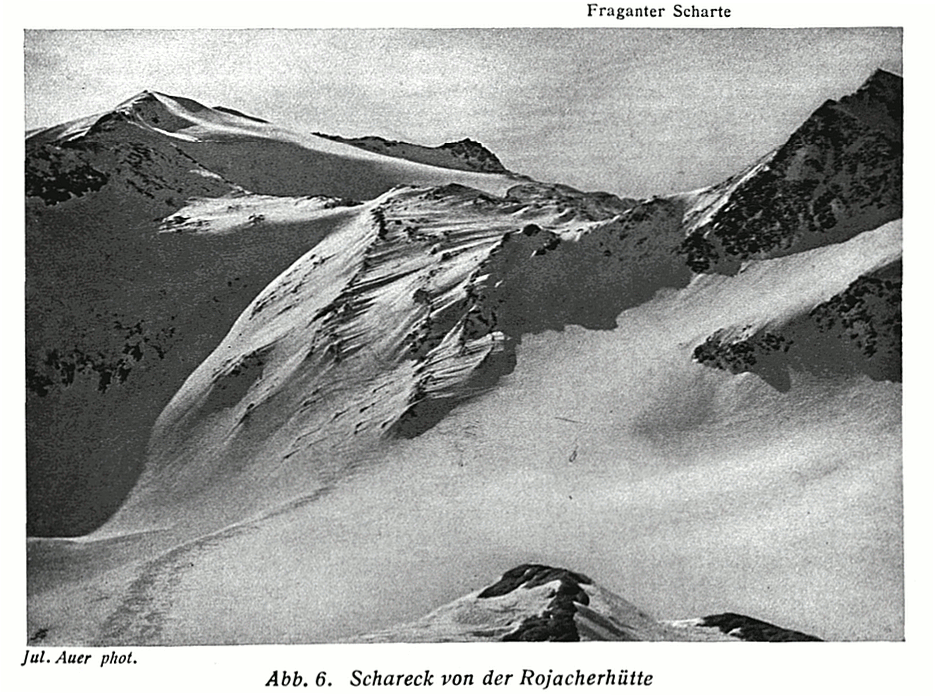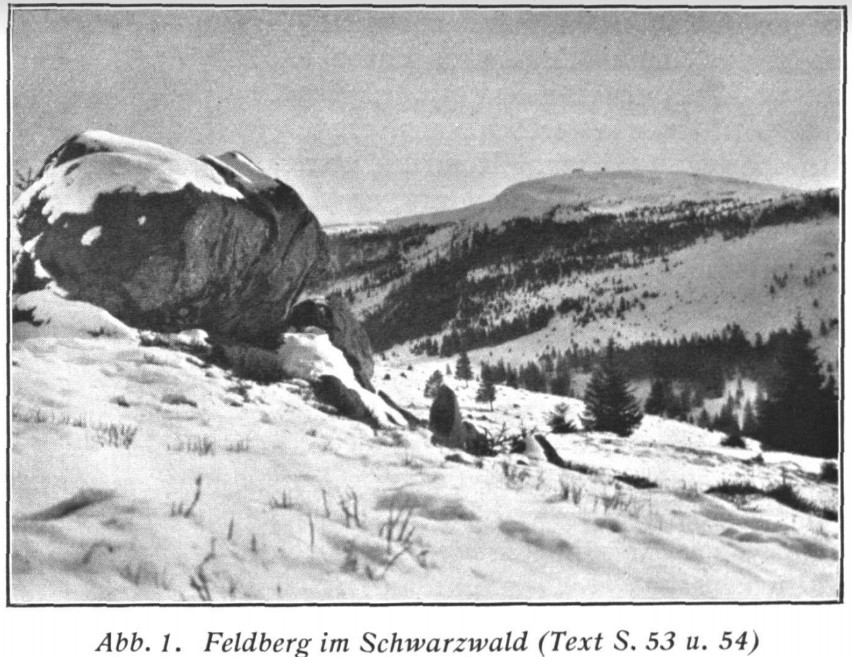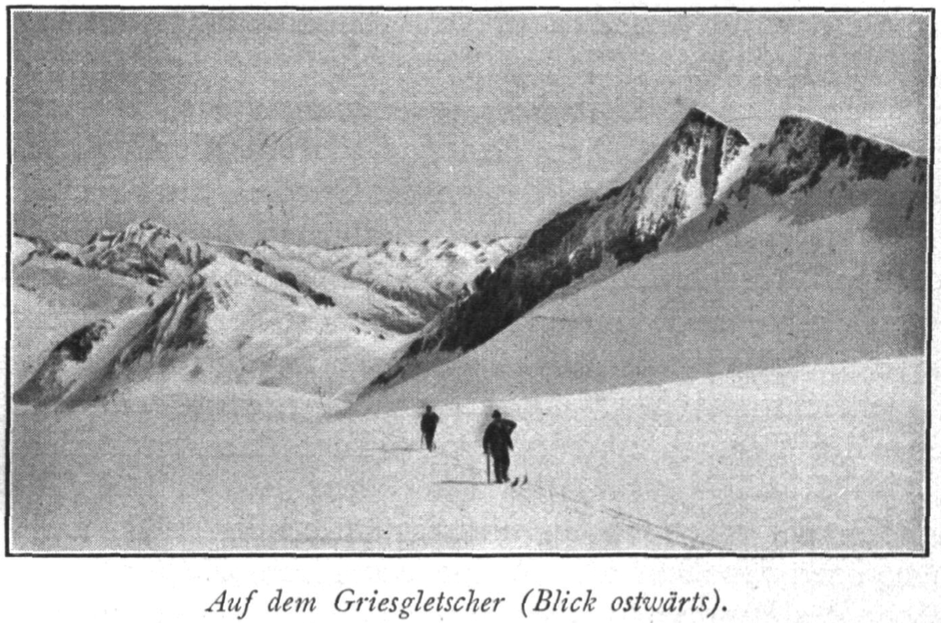GRANATSPITZE, 3085 m, LANDECKER SONNBLICK, 3087 m
(p.) After an overnight train ride from Vienna and a one-hour carriage ride from Uttendorf in the Stubach Valley, Mr. Assanek and I arrived at the pretty inn in Schneiderau on the morning of 2 June 1911. We wished the landlord that he was not superstitious, otherwise the small bill of the first guests of the season must have caused him some anxious hours. After a simple breakfast, we left the hospitable place and hiked into the valley towards the Rudolfshütte. - From the Großvenediger and the Hoher Sonnblick, I had been able to admire all the austere beauty of the Glockner and Granatspitz groups in their winter splendor and I was irresistibly drawn to the magic that winter so richly unfolded in its last bastions.
Only the dawning cloudy morning, which differed from its predecessors only in that it was likely to show its damp beauties a little later than these, was quite suitable to prevent our confidence in victory from growing right up to the summit of the Grossglockner.
I will not tell you here about the beauties of the "Fischerweg", which led us along the foaming Ache through magnificent high forest to the graceful alpine pastures of the Enzingerboden with its pre-march landscapes, of the dreamy Grünsee surrounded by snow between its towering walls, with all the melancholy beauty of a small high lake and the Französach hunting lodge inviting us to rest in wintry surroundings. For this would be too much at odds with our grumbling about this "drudge", although it must be admitted that the impartiality of our judgment was, like ourselves, considerably reduced by the weight of the skis and ice axes, the rope, the eight days' provisions, the crampons, as well as by the rain and snow whipping headwind and other such trifles. After overcoming the last steep step "Im Winkel", which is dangerous for avalanches in reasonably unfavorable snow conditions, we were able to use the skis all the time. After five and a half hours of walking in a heavy snowstorm, we reached the Rudolfshütte, 2242 m, which is charmingly situated in snow-covered surroundings.
There, our predecessors (as we learned in the valley, they were hunters) had already made sure that the rest of the day passed quickly by cleaning and tidying up. Further entertainment was provided by a small iron stove, which, although quite voracious itself, showed little understanding for our hunger and thirst, caused us much trouble and proved to be of little practical use in its design. But otherwise it was very cozy in the Rudolfshütte.
The beauty of the next morning drove us out early. The Granatspitze and Landecker Sonnblick were our destination. Dazzling fresh snow and a deep blue sky, from which the surrounding peaks stood out sharply with their waving snow plumes and dashing ridges, soon made us forget our sore, swollen shoulders from yesterday. After a short shot to the shore of the snow-covered Weißsee, we turned towards the Tauernkogel, taking into account the numerous avalanche paths in our choice of ascent route, and reached the steep hollow leading up to the Sonnblickkees, crossing the northern slopes far below to the west. We soon passed through it and easily reached the glacier. Here the fresh snow had blown away and we made our way uphill in a wide lane between the icefalls on firm firn, then at an altitude of 2700 m we kept to the summer route and after a three-hour ascent reached the Granatscharte, 2967 m, from where you can reach the Landecker Sonnblick after half an hour of spicy climbing over the south ridge.
A strong south-westerly wind, which hurriedly drove heavy clouds towards us, prevented us from admiring the magnificent panoramic view for long, from which the elegant pyramid of the Großvenediger in the west, the Hocheiser and the Kitzsteinhorn in the east particularly caught our eye. From the Granatscharte we then traversed diagonally upwards towards the east ridge of the Granatspitze, which allowed a higher ascent on skis than the nearer north-west ridge. After a quarter of an hour's quite nice climbing over icy and snow-covered rock, we reached the summit.
In the meantime, the wind had picked up in intensity and a storm, whose approach we had reluctantly observed, must now soon be with us. So we hurriedly climbed to our boards, had a quick snack and then got ready to set off. And now we made our way down the glacier in the tracks of the ascent in a swift, glorious descent. Once we knew the icefalls were behind us and had wide, clear slopes in front of us, we let our skis run free and enjoyed the wonderful skiing. But soon there was a change in the snow conditions. Warm rain had made the snow down here watery and treacherously soft, so that we had to ski very carefully. Then came the steep hollow we had used on the ascent. My companion stopped, cast a longing glance at the hut visible far below, a spiteful one at the snow, stretched the ice axe far away from him and glided, no, raced down the hollow in a straight line! I breathed a sigh of relief when I saw him safe and sound at the bottom and realized that his ice axe had refused a closer union with him. I followed in short swings. After three quarters of an hour's descent, we reached the Rudolfshütte.
Under normal conditions, this tour can neither be described as strenuous nor particularly technically difficult and its beauty will satisfy both the mountaineer and the chiman to the same degree.




